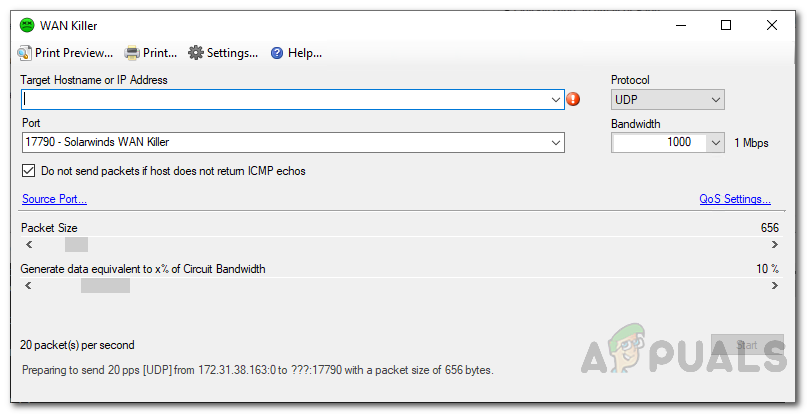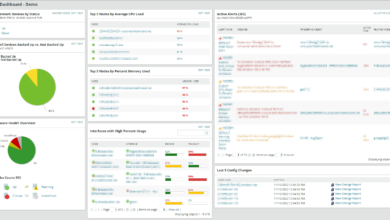How to Test Network Performance on your WAN using Artificial Traffic?
Network performance is always a concern of a network engineer. He would go to extreme measures to ensure that the network performance stays optimum and does not face any hiccups. There is a limit to every and each network and that is something the network admin needs to keep himself aware of in order to avoid any downtimes or surges. The devices present in a network continuously communicate with each other and send data across the network. Now, like we said, every network has a limit and as the devices in a network increase or the data that is being exchanged throughout the network exceeds the limit of the network, it could bring down the whole network to a halt or a stop which is something you don’t really want if you are a network administrator.

In order to help with this and actually test the strength of your network, network admins usually rely on what are called stress tests or torture testing. This kind of testing involves pushing your network to its limit and overloading it with constant traffic to see how it performs under stress scenarios. In a stress test, the network is deliberately targeted with as many protocols as possible which includes TCP, UDP, ICMP, IP and more along with spamming it with data types such as images, videos, audios and more.
After these tests, the information gathered is used to improve the overall network by clearing bottlenecks that are being caused, strengthening the weak points of the network and more. Therefore, tools have been developed to help IT admins in this regard and help them improve their network in every way possible so that better uptimes are ensured which leads to optimum performance.
Let us face it, no one wants downtimes in this IT world especially if your business depends on it as it creates a bad reputation and your competitor might take the edge over you.
Download the Network Traffic Generator Tool
Solarwinds has developed a suite that comes with more than 60 tools for network management. Solarwinds Engineers Toolset (download here) is a network software that has over 60 tools which help make your daily networking easy. From automated network discovery to real time monitoring and alerting features, Engineers Toolset has got it all and is truly a dream come true for network engineers. To be honest, in this fast-paced IT world, you need to have the right tools to manage, monitor and troubleshoot your network.
To accomplish this task along with many others such as monitoring availability and latency of devices in your network we recommend every Network or System Administrator to use one of these network tools, Solarwinds ETS is by far our favorite as it has over 60 tools in Engineers Toolset that can help you in config management, log management, network monitoring, diagnostics and more. We will be making use of this toolset in this guide so you will have to install it on your system to be able to follow through the guide. Solarwinds offer a trial period of 14 days in which you can fully evaluate the product and come to a decision for yourself.
Using the WAN Killer Network Traffic Generator from ETS
As we have mentioned above, whenever network admins and engineers try to determine and analyze overall network traffic performance, they have to test it themselves. For this purpose, you don’t have to use real traffic to determine what points of your network are weak and what portions need load balancing. Instead, you can make use of the Solarwinds WAN Killer which generates random traffic towards the IP address or hostname provided.
Once you have installed the Solarwinds Engineers Toolset on your system, you will be able to find the WAN Killer tool in the launch pad of the toolset.
Stress Testing Network Connections
Once you are able to access the WAN Killer tool, you can begin to adjust the packet size and the bandwidth percentage you want to load with random traffic generated by the tool. To do this, you will just have to provide the IP address or the hostname of the target network and the rest will be done by the tool itself. Here’s how to do this:
- Open up the Toolset Launch Pad by going to the Start Menu and searching for Toolset Launch Pad.
- Once the launch pad has opened up, you will have to look for the WAN Killer tool. This can be done via two methods. First, you just search for WAN Killer in the search field provided and then click the Launch button. Secondly, you can go to General/Other on the left-hand side and then click the Launch button for the WAN Killer tool.

Launching WAN Killer - After the WAN Killer has launched, you will have to configure a few entries per your requirement and you will be good to go.
- First of all, provide the IP address or hostname of the target network in the field provided.

WAN Killer - After that, choose the protocol that you wish to use. By default, UDP is chosen.
- Then, choose the port that you want to use. Solarwind uses the port 17790 by default, but you can change it if you wish to. You can also specify a custom port if you want by clicking the drop-down menu and selecting Custom.
- Once you have done that, you can choose your bandwidth limit. The default value is 1 Mbps but you can provide a custom value via the drop-down menu.
- After that, you can configure the Source Port if you wish to by clicking the Source Port option provided.

Source Port - To choose the packet size, move the bar provided until it provides a value of your requirement.
- Finally, choose the percentage of bandwidth that you wish to load with random traffic via the respective sliding bar.
- Once you have configured everything and all the settings are per your requirements, you can click the Start button to initiate the test.
- The WAN Killer tool will start sending random traffic to the provided hostname or IP address and you will be able to monitor the performance of your network under stress. Once you have gathered enough information, you can stop the tool from generating random traffic by clicking the Stop button. Similarly, to test a different network, you will just have to provide the IP address or the hostname and the tool will take care of the rest.





